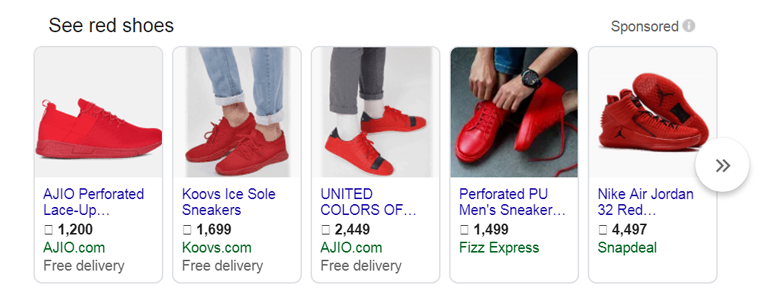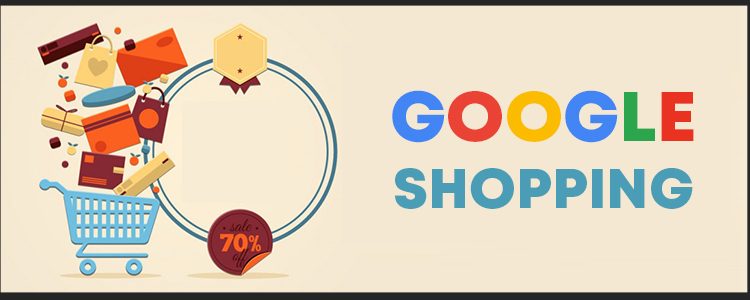With the evolution of modern technologies, the trend of online shopping is spreading with a pace and it’s popularity could be witnessed in every corner of the world. As a seller, it is necessary for them to delve into every segment of online trading for a good generation of revenues. The quest to remain ahead in the competition motivates these vendors to come out with some new strategies for good business growth. Selling on an eCommerce platform like Google Shopping provides opportunity even to small business owners and lets them expand their business reach. Before we move further, let’s discuss what exactly is Google Shopping?
Google shopping is one of the best and most popular eCommerce platforms. It provides sellers an opportunity to access millions of customers around the globe. It is the best thought as an alternative marketplace through which shoppers are directed towards your website. Instead of paying a fixed commission, sellers have to pay an upfront fee to Google i.e., Cost Per Click (CPC) bid. The seller can also direct customers to third-party websites like Etsy, eBay, Walmart, Newegg, and others. If your product’s bid is high, then the Google search algorithm finds your listing relevant for a query given by users and will feature prominently on Google search results.

Becoming a seller on Google shopping is a multifarious entry process. Powered by two different platforms i.e., Google Merchant Center and Google Adwords (formerly Adwords), before selling products on Google shopping, sellers have to activate their accounts on both these platforms. For this, you will be needing a Google login. You can also login by your Gmail account either personal or professional.
Once you have established your account protocols, you can start by optimising your process from the very first step. Sellers must be aware of the Google shopping solutions that allow us to perform various tasks:
- To filter the products which can be included in Google feeds.
- Create rules for auto-optimisation of PLAs.
- Validate feeds before submitting to Google.
- Can set up import and feed schedules.
- Create an alert whenever an error is rectified.
- Can take help from experts of Google feed for fixing errors.
Get started with Google shopping:
Step 1. Feed Set Up on Google Merchant Center:
Mapping of feed and assigning the correct product category for Google Taxonomy could be an intimidating task for sellers. The process of feed mapping can be done manually or by the shopping cart of Google app, but using a trusted Google shopping integration is recommendable.
Documents required for setting up a feed on Google merchant center, Google and Go Data Feed are:
- Google Product Feed Specifications
- Google Summary of Attribute Requirements
After successfully completing the steps outlined by your Google Shopping feed, Google will take several days to approve it.
In between this time, sellers need to keep a check on the health of your feed. Keep a check that there are no errors or warnings as they would prevent your products from being listed.
If you have submitted the application manually, then you can monitor your feed status via Merchant Center. If you use GoDataFeed’s Google feeds, the app will automatically monitor your feeds and alert you regarding any issue, but still, it’s a good piece of advice to log in occasionally to assess your feed health by yourself.
Step 2. Launch a Shopping Campaign on Google Ads:
Google Shopping uses Product Listing Ads to launch a shopping campaign. Product Listing Ads do not require keywords but do require a connection to your product feed. While you can create Product Listing Ads in any existing campaign, for maximum control on your ad spend, creating a new campaign for your PLAs is recommendable.
- Log in to Google Ads. Go to “Campaigns Tab”. This will take you to the “Select campaign settings” page.
- After choosing campaign settings, you have to fill some relevant information. You can:
- Name your campaign.
- Select the linked Merchant Center ID under “Merchant identifier.”
- Choose your “Country of sale.”
- Set the locations you want to target under “Locations.”
- Set your “Default bid,” which can be adjusted later for specific product groups.
- Set your campaign budget on daily basis.
- Add attributes. You can add up to 7 attribute filters.
- Promote and prioritise your campaign (if you are working on multiple campaigns).
- Try to use the “inventory filter” for specifying products you want to show in in your campaign.
- Choose the method of delivery accordingly.
- Schedule ads.
- After choosing all these options, save the information and head towards the next page i.e., “Create ad groups.”
3. Create Ad Groups:
Ad groups page comes with the responsibility of notifying people about free shipping, site sales and other marketing campaigns through promotional texting.
After successfully creating a new campaign, you have to connect it to your product feed. This could be accomplished in 3 steps:
- Go to Ad Extensions tab.
- Then click on the view drop-down menu and select Product Extensions.
- Next, click on the new Extensions button where and select your feed file. Also, remember to set the daily budget of your campaign.
Arranging your Ad groups just like grouping your products on your website should be given some thought before starting. It is the best way to start with by arranging them both in the same way. Sellers can also break the ad groups into Age, Gender, Category, and Brands.
Unlike traditional ad groups in Adwords, Product Listing Ads do not use keywords, however, there is a need to set maximum CPC (Cost Per Click) bids. Bidding is been done on products and not on keywords, so it’s better to focus on products more than keywords.
Here are the steps involved in creating an Ad Group:
- Name your ad group.
- Click on the drop-down menu next to “Subdivide by”.
- Choose an attribute you wish to divide your products into multiple groups like Google Product Category, Product Type, Custom Label, Item ID, or Brand.
- Click on Save and continue, soon you’ll be redirected to the “Product groups” page where a list of different groups of products according to the attributes you picked can be seen.
Bids would be suggested by Google based on your history or on bids made by other customers.
Step 4: Target Your Ad Groups:
Once you have created Ad groups, sellers need to inform Google about the products you want to associate with each ad group created by you.
You can perform it in the following steps:
- Select an ad group and then select the Auto Targets tab.
- Now, select the “Add new product target”.
- Once you click on “Add product target” a new box will appear on your screen on which you can assign products to each ad group according to the attributes in the feed chosen by you, including product type, brand, condition, ads labels or ads grouping.
You can filter out up to three of the above attributes and Google will validate the filter. Creating a target for each ad group is a necessity.
5.Create Product Ads:
Building a product ad is a hassle-free feature for Product Listing Ads. There is no need to worry about headlines, ad copy or destination URLs as everything Google needs is in your feed. A product ad totally depends on how you created your ad groups.
You can create a new product ad by:
- Selecting the Ad tab.
- Now selecting the ad drop-down menu and select Product listing ad.
6. Add Promotions:
Last but not least, Google will prompt you to add a promotional message of 45 characters. This is a free service provided to add any message for the marketing of your products. You can promote your product by informing customers about your discounts and offers, free shipping or you can also write your company’s tag line etc. Sellers should take advantage of this valuable ad space! Products with promotional messages increase the trust of customers resulting in more leads.
Over to you:
Selling on a Marketplace like Google shopping is an advantageous choice in today’s eCommerce industry. It’s a great platforms for retailers to earn good chunks of profits, but it’s not a magic wand obviously. Even though sellers are getting good results, regular monitoring of your shopping campaign is a must. If you own multiple ad groups, but only a few are getting good conversions, it’ better to raise the CPC on the better converting ad group rather than spending time on the useless one. At last, I would sum up by the thought – “Never Settle and never stop optimising!!”
Dive into Happiness! Now Integrate your eCommerce with Google Shopping in just few clicks. KnowBand offers Google Shopping Integrators for various CMS platforms like Magento, OpenCart and PrestaShop which allows you to present your products among larger audience and encourage the brand awareness as well.
Find out more related articles here:




Hi Joe,
I really needed to promote my eCommerce store on Google. Thanks for the information provided as now I can smoothly register on Google Shopping without any inconvenience.